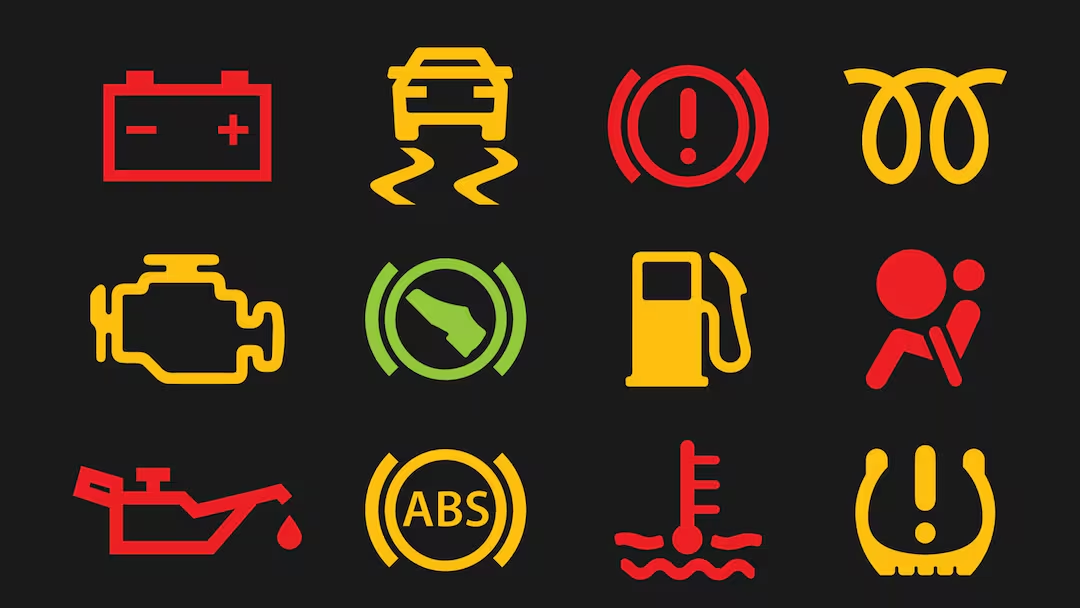Car warning lights are essential indicators that provide critical information about your vehicle’s health and performance. Recognizing what these lights mean can help you respond promptly to potential issues, ensuring your safety on the road. Here’s a detailed overview of some common car warning lights and their meanings.
1. Check Engine Light (CEL)

- What It Means: The Check Engine Light can signal a range of issues, from minor problems like a loose gas cap to serious engine malfunctions.
- Action: If this light comes on, it’s essential to have your vehicle checked by a professional. Ignoring it could lead to more significant damage and costly repairs.
2. Oil Pressure Warning Light

- What It Means: This light indicates low oil pressure, which could result from low oil levels, a leak, or a failing oil pump.
- Action: If this light activates, pull over immediately, check your oil level, and add oil if necessary. If the light remains on, seek professional help.
3. Battery Warning Light

- What It Means: This light signals issues with your vehicle’s electrical system, such as a failing battery or alternator.
- Action: If illuminated, have your battery and charging system checked to prevent being stranded due to electrical failure.
4. Brake Warning Light

- What It Means: This can indicate low brake fluid, worn brake pads, or issues with the braking system itself.
- Action: Check your brake fluid level immediately. If it’s low or the light persists, have your brakes inspected to ensure safety.
5. Tire Pressure Monitoring System (TPMS) Light

- What It Means: This light indicates that one or more tires are under-inflated.
- Action: Check tire pressures and inflate them to the recommended levels. If the light stays on after adjustments, have the system inspected.
6. Antilock Braking System (ABS) Light

- What It Means: This light indicates a malfunction in the ABS, which prevents wheel lock-up during braking.
- Action: While regular brakes will still function, the ABS may not. Have the ABS system checked promptly.
7. Engine Temperature Warning Light

- What It Means: This light signals that the engine is overheating, potentially due to low coolant levels or a malfunctioning thermostat.
- Action: Pull over, turn off the engine, and check coolant levels. Allow the engine to cool down before addressing the issue.
8. Airbag Warning Light

- What It Means: This light indicates a problem with the airbag system, which may prevent the airbags from deploying in an accident.
- Action: Have the system checked as soon as possible to ensure your safety in the event of a collision.
9. Washer Fluid Warning Light

- What It Means: This light indicates low washer fluid levels.
- Action: Check and refill your windshield washer fluid to maintain visibility, especially in poor weather conditions.
10. Door Open Warning Light

- What It Means: This light alerts you that one or more doors are not securely closed.
- Action: Check all doors to ensure they are properly closed before driving.
11. Low Fuel Warning Light

- What It Means: This light indicates that your fuel level is low.
- Action: Refuel as soon as possible to avoid running out of gas.
Conclusion
Understanding car warning lights is vital for maintaining your vehicle’s performance and ensuring your safety. Each light serves a specific purpose, providing valuable information about your car’s condition.
By staying informed about these indicators and responding promptly to any alerts, you can prevent potential issues and enjoy a smoother, safer driving experience. If you’re ever unsure about what a warning light means, consulting your owner’s manual or a professional mechanic is always the best course of action. Drive safely and be proactive in caring for your vehicle!

